Several research groups based at Toolik Field Station are monitoring geochemical markers in the watershed. Groups work cooperatively to travel to research sites and collect water samples. Cold, rainy, foggy weather doesn't keep the researchers inside.
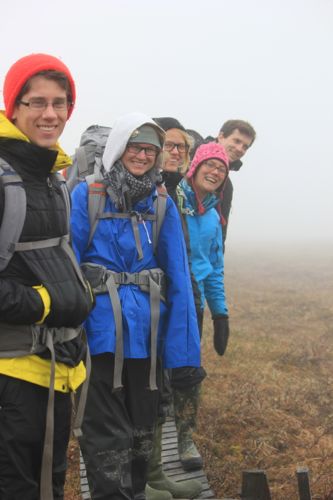 Collection Team
Collection Team
 Boardwalk to Sample Sites
Boardwalk to Sample Sites
We trekked to stream sites in a watershed. Water is analyzed for pH, dissolved oxygen, and carbon dioxide. Researchers were precise when collecting samples, despite the cold and rain.
 Working Carefully in Cold Weather
Working Carefully in Cold Weather
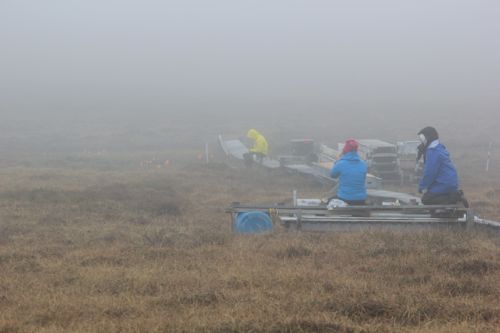 Collecting in Fog
Collecting in Fog
Soil temperature is recorded at 5 and ten centimeter depths, and depth to permafrost is measured.
 Temperature Probes
Temperature Probes
Water samples are taken back to the lab for analysis.
Next stop was a river site.
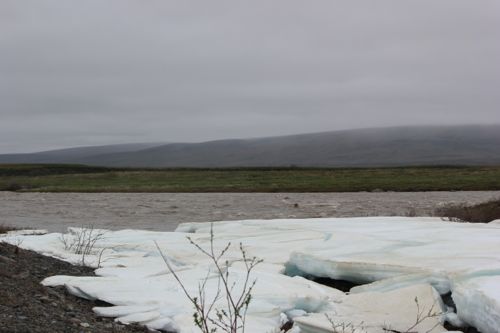 Ice Along River Bank
Ice Along River Bank
Again, water was collected for analysis.
 Walking to Collection Site
Walking to Collection Site
Layers of ice hang to the river banks. Green ice is clearly seen despite the foggy day.
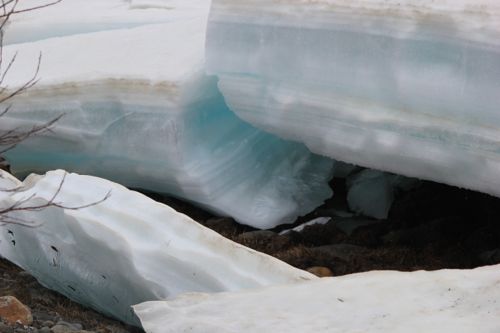 Ice Layers
Ice Layers
Horsetail plants grow along the rocky bank. Horsetails are one of the first plants to appear on earth.
 Horsetail Plant
Horsetail Plant
I'm impressed with the dedication and enthusiasm of the researchers here. This is a great group. No wonder that they are leaders in their fields.
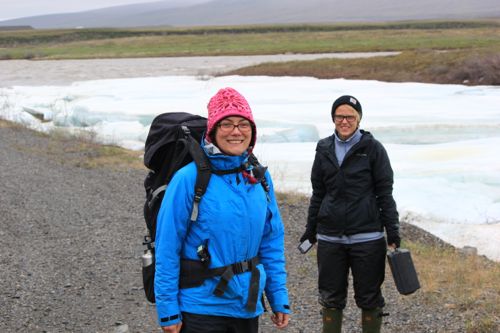 Katie and Adrianna
Katie and Adrianna

Comments